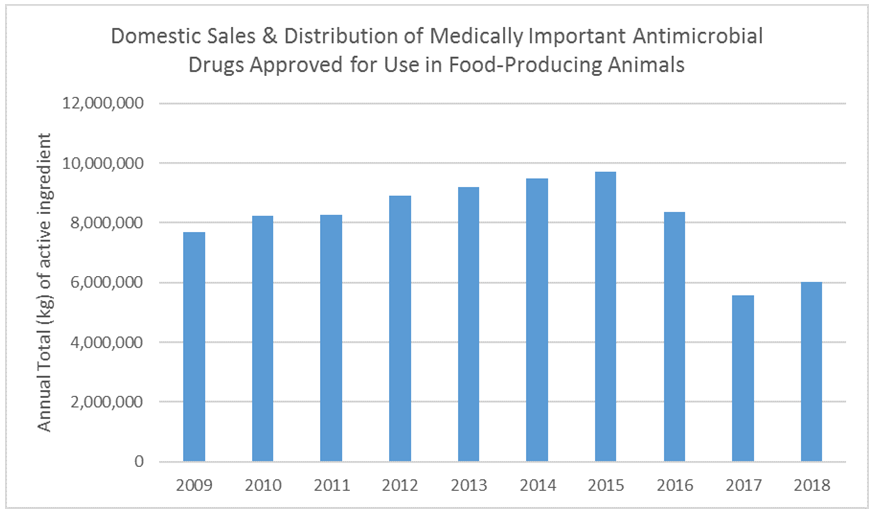The FDA released the 2018 Summary Report on Antimicrobials Sold or Distributed for Use in Food-Producing Animals. The report shows that domestic sales and distribution of medically important antimicrobials for use in food-producing animals increased by 9% between 2017 and 2018. Despite this increase, 2018 is the second-lowest year on record. The overall the trend continues of ongoing efforts to support antimicrobial stewardship are having an impact. Sales in 2018 are down 21% since 2009, the first year of reporting, and down 38% since 2015, the peak year of sales and distribution. Tetracyclines represent the largest volume of these domestic sales (3,974,179 kg in 2018), which increased by 12% from 2017 through 2018. Of the 2018 domestic sales and distribution, Tetracyclines accounted for 66%, penicillins for 12%, macrolides for 8%, sulfas for 5%, aminoglycosides for 5%, lincosamides for 2%, cephalosporins for 1%, and fluoroquinolones for less than 1%. Of the antibiotics used, an estimated 42% used in cattle, 39% for swine, 11% for turkeys, 4% for chickens, and 4% for use in other species/unknown. While progress was made toward antimicrobial stewardship goals, additional work is needed to address antimicrobial resistance. @ https://www.fda.gov/animal-veterinary/cvm-updates/fda-releases-annual-summary-report-antimicrobials-sold-or-distributed-2018-use-food-producing?utm_campaign=12-10-2019-ADUFA105&utm_medium=email&utm_source=Eloqua
FDA Annual summary report on antimicrobials use in Food-Producing Animals in 2018
FDA 2018 Report on Antimicrobial Sales for Food-Producing Animals
FDA has released the 2018 Summary Report on Antimicrobials Sold or Distributed for Use in Food-Producing Animals.
No comments


